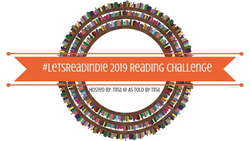 |
The Oracle Codeby Marieke Nijkamp, Manuel Preitano (Illustrator) Paperback, 198 pg. Read: April 18, 2020 |

Dad once told me that even a hopeless situation doesn’t always stop him. Not because he believes there’ll be a miracle, but because giving up feels too final.
And pretending is a form of grieving, too.
This is a YA graphic novel from DC—I’m not sure that the medium needs YA-focused work, but hey, if it brings readers to the medium in a less-intimidating way, sure, why not. I’ve read a handful of DC’s YA stuff and have enjoyed it all, so what do I know? The Oracle Code is another proof that DC has made a smart move with these.
This is an alternative take on the Barbara Gordon-Oracle origin story. Now, I honestly have no idea what the current DC continuity take on Barbara is, I don’t know if she’s the ex-Batgirl, etc. This, however, is not that version. Barbara is a computer enthusiast/would-be hacker who is hanging out with a friend one fateful night and sees her father respond to a police call. She listens to the police radio and realizes it’s nearby and decides to go take a peak. Which results in her being shot and paralyzed.
Six weeks later, her father takes her to The Arkham Center for Independence for physical and emotional rehab. Slowly, she sheds some of her anger at her situation and makes a friend or two (while trying to get her best friend to communicate). At some point, she thinks she stumbles on to some disappearances at the Center, but her concerns are explained away or dismissed.
Barbara won’t take this at face value and begins to look into things on her own—and you can guess how things go from there.
It’s a fun story and I like the way Nijkamp deals with Barbara’s anger, grief, and future.
Preitano’s art fit the story well—I particularly liked the way he showed her thinking things through (depicted by puzzle pieces). There are also some “bedtime stories” being told with art appropriate art—a little creepier than the main art, honestly.
Ultimately, this could have been any driven daughter of a police officer/detective/commissioner, there’s nothing that’s inherently Barbara Gordon-esque about the character. And really, ridding her of the Batgirl past, really takes away a lot of what makes me like Oracle—but this particular Barbara struggling to discover a new way of being herself in her circumstances shares enough to not truly annoy me. But it does rob the story of something, I think.
That said, this is a pretty fun graphic novel and I gladly recommend it to you.

This post contains an affiliate link. If you purchase from it, I will get a small commission at no additional cost to you. As always, opinions are my own.
![]()




















